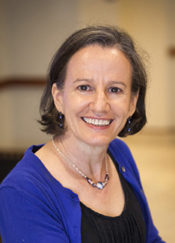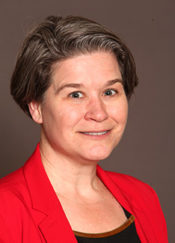This Commentary is written by Helen Baker, Priscilla Hall and Jennifer Vanderlaan
As of July 1, 2018, people in rural counties in Georgia can receive local hospital services through micro-hospitals. Although these 24-hour emergency units with less than 10 inpatient beds will help improve access to many types of care for the 17 percent of Georgians who live in rural counties, they are not likely to improve access to maternity services. However, with the inclusion of “along-side” birth centers, rural micro-hospitals can provide maternity services to rural families and save Georgia Medicaid money.

According to the American College of Obstetricians and Gynecologists and the Society of Maternal Fetal Medicine, a birth center is a small, out-of-hospital unit that provides birth care for women unlikely to experience complications at delivery. Unlike hospitals’ labor and delivery units, birth centers do not provide surgical services. Instead, personnel at birth centers act early to identify which patients are at risk of complications and transfer them to hospitals before it’s time for delivery.
Because birth centers do not offer surgery, they are less costly to run. They can be economically sustainable in communities that can’t afford hospital obstetric service.
The care provided in birth centers is safe for women, even when the center is in a rural area. A 2017 study found that women who had their babies at rural birth centers were no more likely to have a delivery complication than their urban peers, and that less than 5 percent of women eligible for care at rural birth center had to be transferred elsewhere for caesarean delivery. One of the ways birth centers achieve these positive results is by avoiding the practices that have been shown to have limited effectiveness or are associated with poor outcomes for healthy women. Avoiding unnecessary treatment is one of the ways birth centers reduce the cost of delivery care.
Like hospitals, birth centers have the tools and equipment necessary to monitor the safety and comfort of healthy women and their babies during labor. Though the options for pain management are different than in a hospital, most women are satisfied with the relief they provide. Women are encouraged to use movement, massage or hydrotherapy, but they also have access to narcotics and nitrous oxide (laughing gas). Studies show that less than 20 percent of women decide they want stronger pain relief than the birth center can provide. Interestingly, women who use birth centers report higher satisfaction with their maternity care than women who use hospitals, even if the women transfer to a hospital during labor. Because of the high satisfaction, lower costs and good outcomes, birth centers could be a way to ensure higher-value maternity care.
In addition to being safe and economically sustainable, rural along-side birth centers have the potential to reduce Medicaid expenditures for maternity care in Georgia. Researchers estimate birth centers save $11.6 million per 1,000 births. This is important in Georgia, were 54 percent of births are covered by Medicaid. Rural Americans are more likely to use Medicaid than their urban peers, which means access to birth centers in rural areas can help reduce costs to Medicaid.

Perhaps more importantly to Medicaid costs, rural birth centers provide a solution to the ongoing loss of maternity care in rural Georgia. Currently, half of Georgia’s rural counties have no one who is licensed to deliver babies, and it is estimated that 75% of Georgia’s rural primary care service areas will lack adequate birth care by 2020. The loss of rural maternity care is not unique to Georgia. Nationally, nearly 1 in 10 rural counties lost their hospital labor and delivery units between 2004 and 2014. This increases costs for maternity care because when a county loses hospital-based birth services, there is an increase in out-of-hospital births, preterm births, and births in hospitals without obstetric units. And communities without maternity care also have reduced use of prenatal care, which is also associated with an increase in preterm birth. Preterm birth imposes a social cost of $26 billion every year, and those costs are disproportionally covered by Medicaid.
Along-side birth centers can help address the current lack of maternity care in rural areas, because unlike hospital labor and delivery units, these centers include space for care for women through pregnancy and beyond. Staff at birth centers collaborate with physicians who see high-risk pregnant women in neighboring areas, allowing even some local prenatal care for women with high-risk pregnancies. Providing prenatal and “well-woman” care contributes to the income of an along-side birth center, allowing economic sustainability with a lower delivery volume than is necessary to support a hospital birth unit.
There are a number of challenges that exist in relation to having along-side birth centers. These include the cost of infrastructure development (buildings and equipment) and the challenge of recruiting licensed personnel. Infrastructure development is the easier challenge, because it’s possible to work with existing hospital spaces and establish contracts with birth center management companies to create the centers.
Staffing is a larger challenge, because birth centers are commonly staffed by nurse midwives. Under Georgia law, any nurse midwife must work under a collaborative agreement with a practicing physician. This creates a second level of recruitment and requires hiring collaborative physicians who will not be present at birth centers. Finding such doctors is not easy. A recent survey revealed that 43 percent of midwifery students trained in Georgia planned to work in rural areas, but only 10 percent of physicians doing their obstetrics residency in Georgia wanted to practice in rural regions.

This problem will eventually need to be addressed through new midwifery licensing laws. Independent licensing for midwives is a reasonable policy, already in use in over half the states in the nation. However, until it is the law in Georgia, hospital corporations operating micro-hospitals with along-side birth centers will need to find collaborating physicians.
With the new funding available for micro-hospitals in rural Georgia counties, including along-side birth centers to these hospitals provide an opportunity for low-risk pregnant women in rural Georgia to access obstetric services closer to their homes, families and communities.
Helen Baker is an Assistant Professor at the Nell Hodgson Woodruff School of Nursing at Emory University and a Thought Leader Fellow of Institute for Developing Nations at Emory University.
Priscilla Hall is a Senior Clinical Instructor at the Nell Hodgson Woodruff School of Nursing at Emory University and a Certified Nurse Midwife.
Jennifer Vanderlaan is a Senior Clinical Instructor at the Nell Hodgson Woodruff School of Nursing at Emory University and Certified Nurse Midwife.

